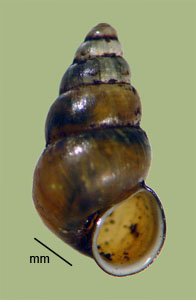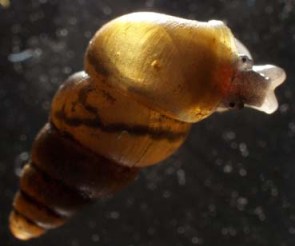Classification
The domain Eukarya is characterized by having eukaryotic cells, which have a nucleus that is encased in membrane (Hickman, 2005). This is opposed to a prokaryotic organism which does not have this membrane bound nucleus. (Hickman, 2005)
Organisms within the Metazoan kingdom must be multicellular as well as
heterotrophic (Encyclopedia of Life, 2011).
Organisms that are heterotrophic obtain their nutrients from other
organisms rather than relying on photosynthesis.
Animal cells do not contain a rigid cell wall, as is characteristic of
plant cells (Encyclopedia of Life, 2011).
The morphology of Mollusca is extremely diverse.
However, they all contain a head, foot, and visceral mass (Hickman,
2005). The head contains a mouth and
specialized sensory organs (Hickman, 2005).
Many of the Mollusca have a radula, which is like a coarse tongue, that
they use for scraping food of off surfaces (Hickman, 2005).
The foot of a Mollusca is also quite variable depending on the
species (Hickman, 2005). It can be
specialized for attachment to certain substrates or for locomotion. (Hickman,
2005)
The class Gastropoda contains 80% of the species in the phylum Mollusca (EOL).
The gastropods undergo a process called torsion (Hickman, 2005).
Torsion involves a twisting process during the gastropods’ development
(Hickman, 2005). Due to the torsion
process, the visceral mass is asymmetrical (Hickman, 2005).
Outside of visceral mass, gastropods can be considered bilaterally
symmetrical (Hickman, 2005). This
class often has hard shells and are rather slow moving (Hickman, 2005).
One of the major features of Mesogastropods is that they don’t have a selenizone
(Wells, 1998). A selizone is defined
as a “spiral band of concentric growth lines or threads generated by a narrow
notch or slit near the top of the o uter lip” (Conchological Society, 2011).
uter lip” (Conchological Society, 2011).
Snails in the family Pomatiopsidae are rather small in size and are found near
or in fresh water (Bunje, 2004).
The genus Pomatiopsis has a “shell
approximately twice as tall as (it is) wide.”
The Slender Walker as a shell that ranges from 5-8 cm (Abbott, 1948). The color of the shell ranges from a "translucent chocolate-brown to light yellowing brown" (Abbott, 1948).
